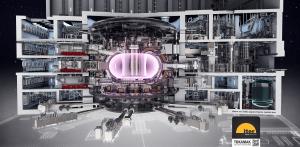Masters of change hold 500th meeting
With robust configuration management, project decisions related to design, development, operation and maintenance can be made on the basis of technical data that is not only consistent, but also controlled and validated.
Exactly 14 years ago, in January 2008, the ITER Configuration Control Board gathered for the first time under the leadership of Eisuke Tada, current Deputy of the Director-General who was at that time Head of Project Office.
Before that date, all design changes were brought before a Technical Management Board. The creation of a new board for configuration control was a sign of the importance top management placed on creating an integrated approach to handling project change requests and the recognition that, as the project moved forward, proper configuration management was integral to controlling cost, schedule and procurement. The idea was launched by Stefano Chiocchio, Design Integration & Configuration Control Section Leader at that time, who clearly saw the need for it. Every partner had proposals for detailed design changes to simplify, improve, or reduce costs, but very seldom were such proposals "stand-alone," with no implications for other equipment.
Today the CCB is celebrating its 500th meeting. It has been a long journey marked by many challenges and one overriding preoccupation—the constant search for the most efficient methodology.
"Since we introduced a Product Lifecycle Management (PLM) tool to manage ITER configuration in 2015, the system is more challenging for users, who have had to upload all engineering data and rigorously determine their applicability and level of technical control. But it gives us the guarantee that all project change requests are properly implemented throughout the project," says Benoit Salamon, Configuration Management Division Head since December 2021. "There is no space for omission: if a document is listed as 'impacted' by a certain approved change request, the request is blocked for closure until the new revision appears. These highly interlinked and automatized checks ensure high-quality engineering processes."
The effort to populate the PLM tool with data is still a work in progress. More than 100,000 documents have been uploaded (beginning with those relating to First Plasma components and systems) and another few hundreds of thousands are expected by the deuterium-tritium phase. We still need to interlink the configuration management tool with other ITER databases or improve these connections. But we can already see the fruit of the enormous effort of the past years.
"The work accomplished so far is incredibly valuable and now we are taking it one step further, examining all missing items in the technical baseline and preparing a list of 'known unknowns,'" says Alain Becoulet, Head of the Engineering Domain and CCB Chair since 2020. "We are finalizing a Project Change Request Forecast Roadmap—a list of changes that we know we still have to introduce for the proper operation of the machine."
The Configuration Control Board today is not only about project change requests; it has expanded to have oversight over other baseline-related issues, risks, and the resolution of some delivered-component non-conformities involving Domestic Agencies. We now have CCB meetings at three levels, from systems-level discussions right up to the level of the Director-General.
What remains unchanged is the participation in discussions. The CCB remains a forum that involves the ITER Organization and the Domestic Agencies. Each person who has a direct interest in the system or component under discussion can connect and participate remotely in the deliberations (since COVID-19, there have been no in-person gatherings).
Harry Bailey, configuration manager from the United States ITER Domestic Agency, speaks for all Domestic Agencies when he says, "We are all strongly involved in the discussions at CCB, and also keep a vigilant eye on what we are doing and how. If we believe we can help, we initiate discussion on possible improvements. As ITER evolves as a project, critical issues and concerns evolve as well. Our mission is to ensure that CCB fulfils its role as 'configuration guardian.'"


